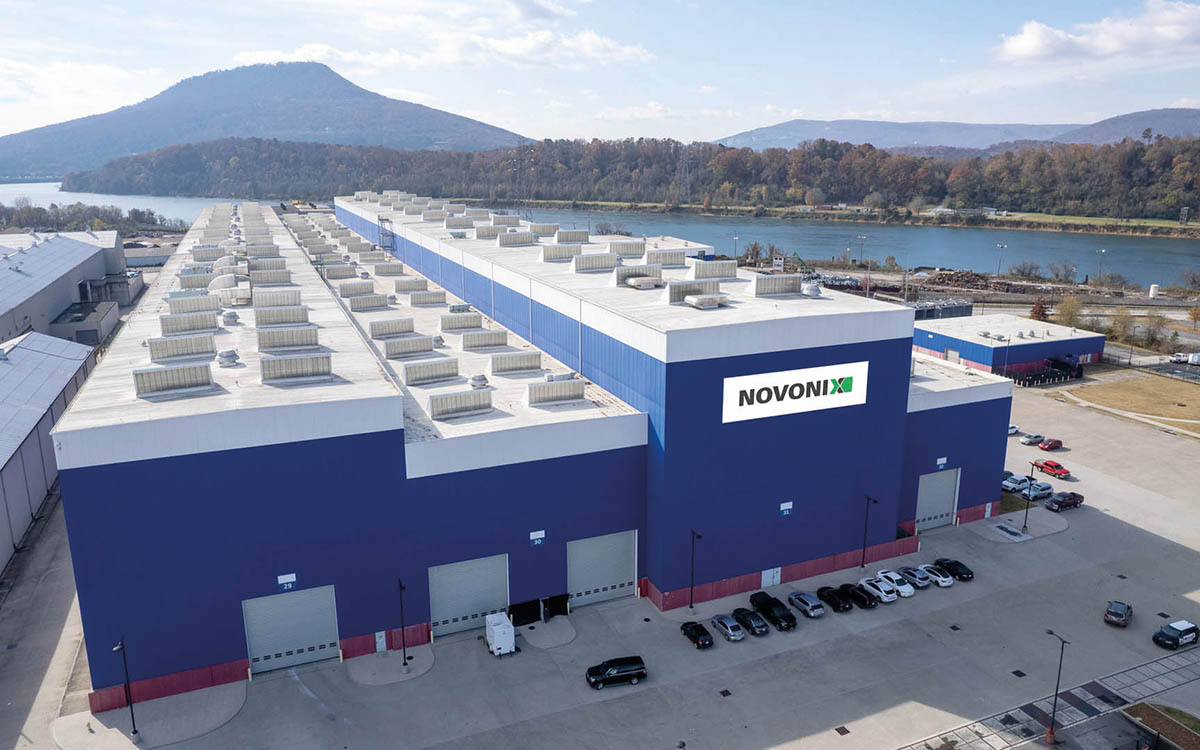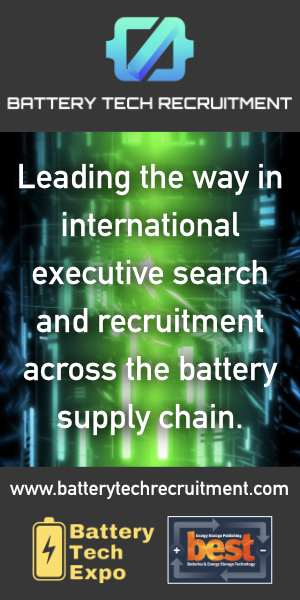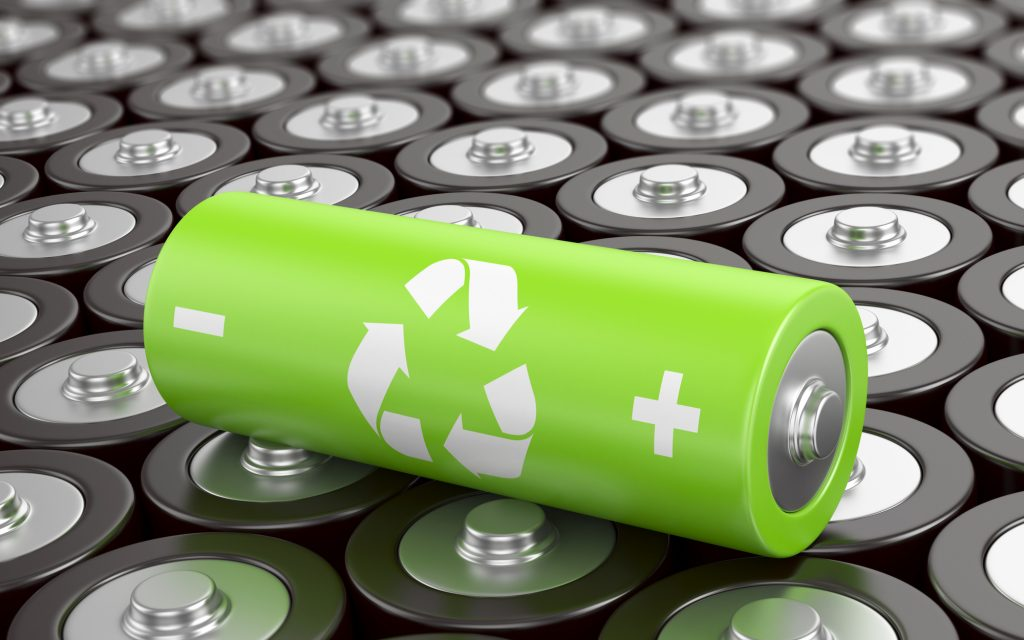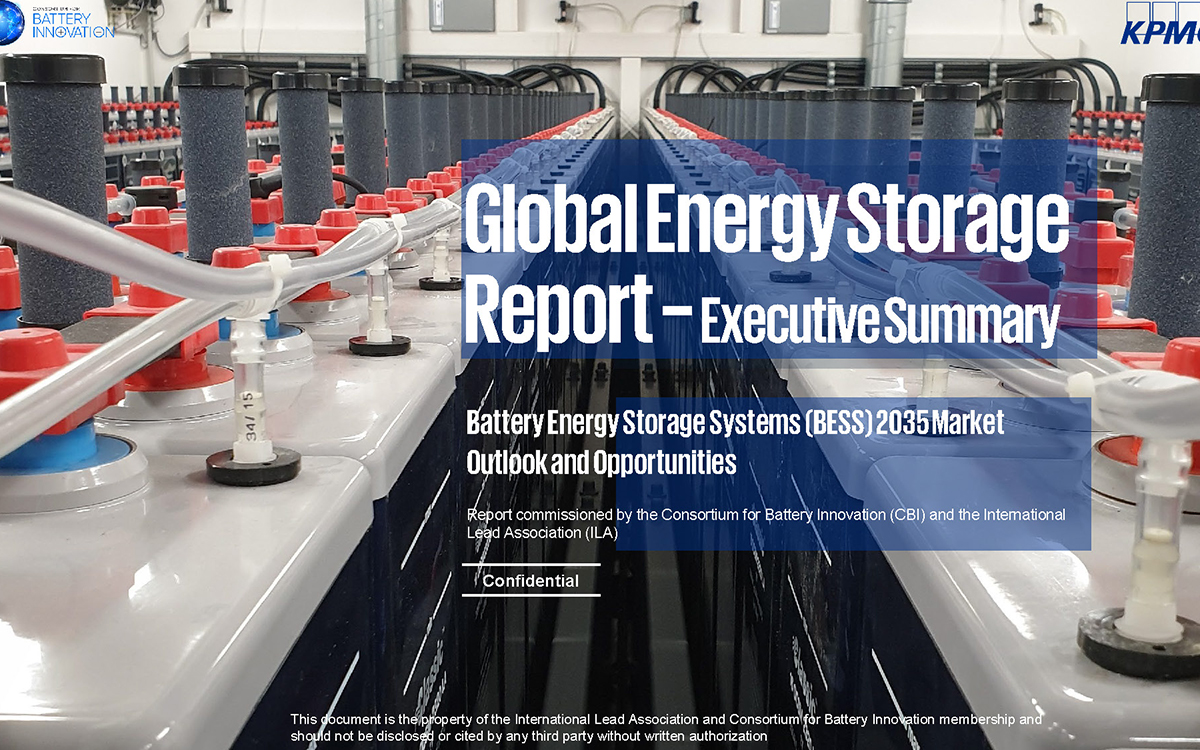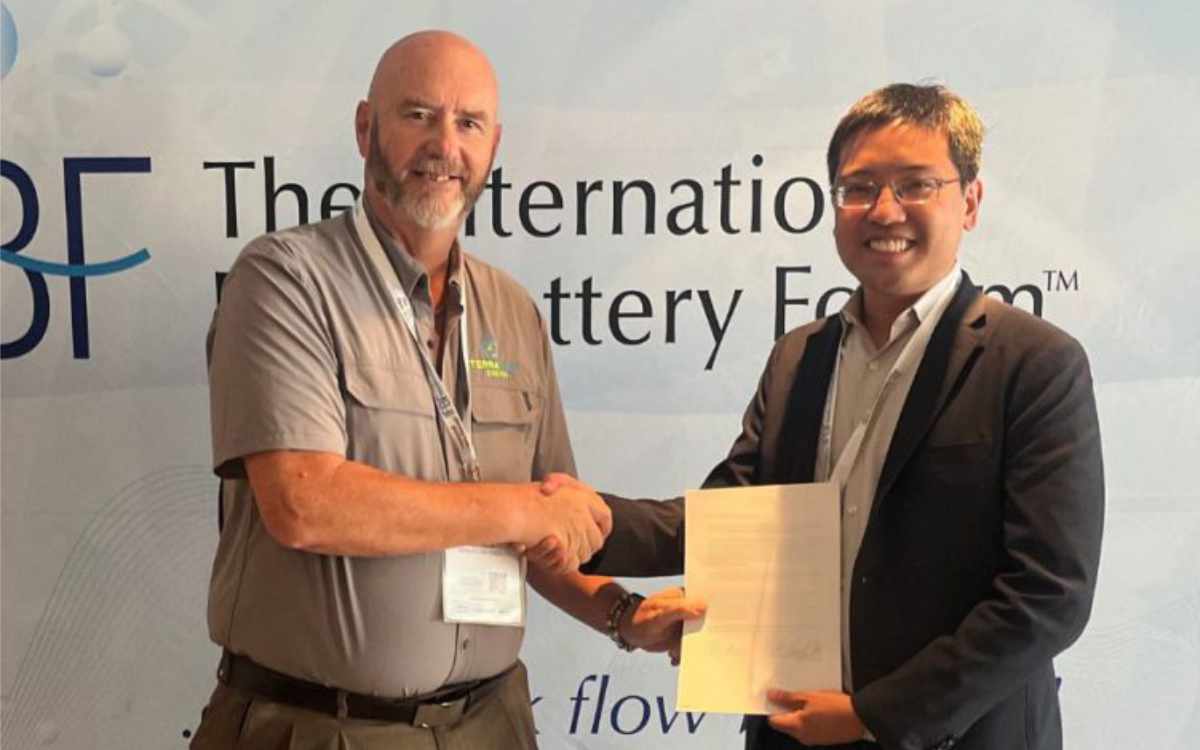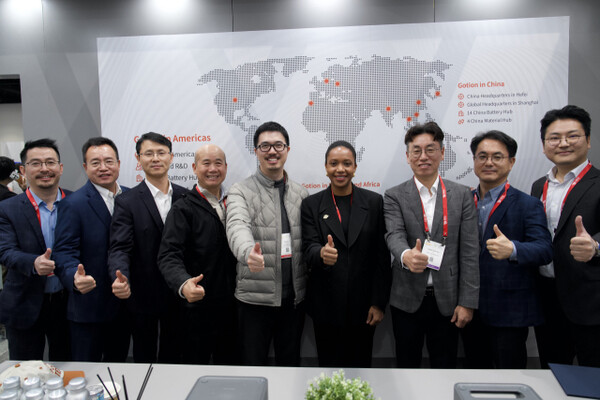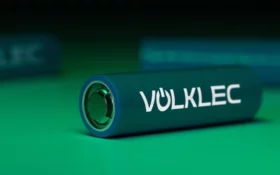Novonix is a multifaceted international lithium-ion battery (LIB) technology company developing and producing materials in North America which are in high demand for anodes and cathodes. It also makes battery-testing equipment and experimental LIBs to validate its anode and cathode materials. Frank Lev met with co-founder and CEO, Dr. Chris Burns, to learn more about the company’s journey from inception to current state.

Novonix operates three divisions that are integrated into one efficiently performing structure. The underpinnings of the company’s success are in the Canadian Dalhousie University and Professor Jeff Dahn, one of the pioneering developers of LIBs. “My master’s and PhD in physics are both from Dalhousie,” said Burns. The company claims to have a “competitive advantage through a synergistic operating structure.”

Prof. Dahn made numerous contributions to the development of LIBs. His most important discovery was an ethylene carbonate-based electrolyte, which enabled the commercialisation of LIBs. “And then, of course,” said Burns, “NMC cathodic materials were first synthesised in his labs in the early 2000s. Jeff has made significant contributions to the industry.” Prof. Dahn has received multiple awards, including the Gerhard Herzberg Canada Gold Medal for Science and Engineering.
Burns’s first project in Prof. Dahn’s group in 2009 was “all about how we could test batteries faster. It was in the vein of this obsession of needing longer life batteries for vehicles and energy storage and understanding the materials at that time.”
By the late 2000s, Burns and his colleagues produced results “good enough to meet the performance requirements and bring costs down.” “But the real question,” he said, “was whether we had a 10-year battery and how long would it take us to figure out if it made it better or worse when we change the chemistry?”
To address these questions, Burns and his team developed cycling equipment to test batteries most efficiently and precisely. “This was the basis of my master’s and PhD,” he said.
In 2013, he started the company to develop his product and sell it to the industry, which then grew into being a service provider. “It’s now about a 95-person organisation in the Halifax area, between two sites where we have battery pilot lines to build cells. Thousands of test channels work from material science through pack development for customers across the industry,” he said. “That is kind of the genesis of the company, this was the big turn, the big pivot that we set our sights on about six years ago to become a materials provider.
“Thinking big is essential,” he said. “We learned if you are building a company, treat that company like a big enterprise from day one. There is a delicate balance, but you must see yourself as a real entity, even if it is only two guys working out of a garage.” Burns further explained how he got where he is now.
Senior research engineer at Tesla
“While building what is now our Battery Technology Solutions (BTS) group here in Canada in 2015, I also took a position with Tesla as a senior research engineer. For two years, I was their first technical employee in Canada, and I built out labs for them here in the Halifax area because they started sponsoring Dr. Dahn’s laboratory in 2016.” Burns worked for Tesla from 2015–2017 on a huge project to validate technical materials for the supply chain group.
“Tesla was concerned with finding a source for supplying large volumes of graphite, which was a big question in 2015. The folks at Tesla were perhaps the only ones here in North America at that time that were asking the right scale questions,” he said. Burns spent two years across the global battery graphite landscape, providing solutions for Tesla and learning the ropes for his future endeavours.
“It became very clear that synthetic graphite was better than natural graphite for cycle life. And, wearing my Novonix hat, I always thought that quality was critical. The companies that made synthetic graphite for industrial use, like furnace electrodes, were not developing battery-grade synthetic graphite technology. They just wanted to grind up that industrial-type synthetic graphite and use it in the batteries. But that does not work for the auto sector’s performance requirements for the vehicle batteries,” he said. He added that the idea of localisation had sprung out of “sheer necessity.”
“If you were at Tesla at that time,” he said, “the gigafactory was coming online in Reno. This idea of localisation seemed obvious and inevitable, and if the cell manufacturers came here, they would also need a supply chain.”
Left Tesla to set up Novonix Anode Materials Group
As a result, Burns left Tesla in 2017 to set up the Novonix Anode Materials Group (NAM), specifically to bring scale production of battery-grade synthetic graphite to the US. The NAM acronym is quite appropriate, as it also means negative active material.
Burns sold the business in Canada to a public company in Australia to raise capital to establish NAM and Novonix as a leading American supplier of battery-grade synthetic graphite such as GX-23. This is why the company’s headquarters and public listing are in Australia, and the production facilities are in Canada and the US.
Novonix Anode Materials division
Located in Chattanooga, Tennessee, NAM purchased the Riverside facility in 2021 with the intentions for a mass production synthetic graphite facility. US Secretary of Energy, Jennifer Granholm, attended the opening ceremony.
Burns said: “In Chattanooga, we have both a pilot scale production facility for synthetic graphite and our Riverside facility, which we intend to scale to 20,000 tonnes per annum. Synthetic (artificial) graphite is used for anodes of the incumbent LIBs.”
The material is in great demand because it enhances the stability of the batteries. It is typically blended with natural graphite to produce a battery anode material (BAM). “Almost always, there is more synthetic graphite in the blend. It could have up to 60% in batteries with NMC cathodes. When people use LFP, it is almost always exclusively synthetic graphite,” he said.
Synthetic graphite is typically produced from petroleum (needle) coke precursor in a tedious process involving crushing, classification, agglomeration, calcination, and graphitisation. The latter is a lengthy, expensive, and environmentally challenging process of pyrolisation of the precursor in a specialised furnace at temperatures above 2300°C. It consumes a lot of energy and depends on the availability of cheap electricity or fossil fuels. For instance, China produces almost 46% of its synthetic graphite in Inner Mongolia, which has vast reserves of brown coal used to produce cheap electricity required to run production furnaces.
Near-zero emission Generation 3 furnaces
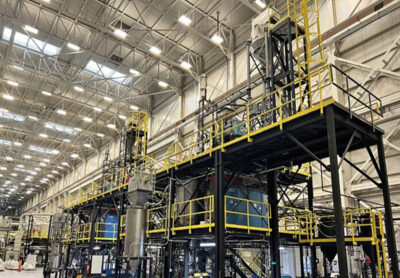
Unlike Chinese Acheson-type furnaces, the Riverside production line will be equipped with more efficient and near-zero-emission Generation 3 furnaces supplied by Novonix’s partner, Harper International – an American furnace technology leader. These are dedicated continuous induction furnaces, which Novonix validated throughout 2023. The sample material met all its target physical and electrochemical specifications, demonstrating a high level of performance with an exceptionally low environmental footprint.
Ordering of furnaces and other production equipment for the Riverside buildout will start in the first quarter of 2024. Burns said of the milestones achieved: “The results of our ongoing production campaigns clearly demonstrate Novonix’s path to profitable production through our first-in-the-world graphitisation furnace technology.”
He added that over several production campaigns, the furnaces delivered in-spec product at a mass scale, reaching target design throughputs. The potential to expand Riverside’s production output to up to 20,000 tpa is an important opportunity for the company’s near-term growth plans with significant demand and strong progress in customer development.
Positive life cycle assessment
The life cycle assessment conducted by UK-based company Minviro demonstrated an almost 60% lower global warming potential (GWP) of Novonix’s graphite in NMC batteries relative to the same specification synthetic graphite of Inner Mongolia. It is 30% lower than that of natural graphite produced in China. Furthermore, the LFP batteries with Novonix anodes showed 40% lower GWP than natural graphite anodes from China.
The reports also confirmed that Novonix’s synthetic graphite is one of the best in class for lengthening the battery’s lifetime and greater energy efficiency. Coulombic efficiency (CE) is one of the crucial parameters that measure the electrochemical stability of the materials in the LIBs. The higher the CE, the longer the battery life. The company’s anode material possesses better CE than commercial materials, including the ones used in benchmark Tesla-S cells. It also has better than typical commercial graphite capacity retention after hundreds of cycles.
Burns said: “We are excited to release these results, as this assessment is one of many indicators of our priority to make Novonix a leader in sustainability and cleaner energy across the automotive and energy storage sectors.”
NAM is changing the existing paradigm where China is the world’s exclusive supplier of graphite by growing US production capacity. “We are now a leading US-based supplier with plans to scale significant domestic volumes of battery-grade synthetic graphite anode material, accelerated further by domestic sourcing requirements for EV tax credits and record US federal investment,” he said.
In late 2024, the company will begin delivering synthetic graphite to a leading US developer of LIBs, KORE Power. KORE is building a one million square foot manufacturing facility in Arizona to produce up to 12GWh of LIBs, for which Novonix will exclusively supply up to 12,000 tpa of BAM.
R&D tie-up with LG Energy
In June 2023, the company signed a joint R&D agreement with LG Energy Solution (LGES), a leading US-based developer of LIBs for EV and ESS applications. LGES has also invested $30 million in convertible notes in Novonix. Upon completion of the agreement, LGES can purchase up to 50,000 tonnes of Novonix BAM over 10 years. The company signed MOUs with Panasonic Energy and Samsung SDI to evaluate its BAM.
In August 2021, a leading worldwide producer of needle coke, the critical precursor for synthetic graphite, Phillips 66, made a $150 million strategic investment to become Novonix’s largest shareholder and participate in the technology development to increase performance and lower carbon intensity.
In November 2023, the company received a $100 million grant from the US Department of Energy (DOE) to expand the production of synthetic graphite at its Riverside facility. The funds will support the installation and commissioning of equipment to produce the targeted 20,000 tpa.
“Recent Chinese export controls on graphite emphasise the importance of building domestic supply in the US. We remain committed to continued expansion and building additional production facilities with our focus currently on reaching mass production at Riverside to demonstrate our ability to compete, both technically and commercially, on a global scale,” said Burns.
Novonix’s BTS
In the late 2000s, Prof. Dahn’s laboratory built the first Ultra-High Precision Coulometry (UHPC) device to gather battery materials’ performance data in detail, which was not attainable before. Novonix’s current UHPC system is a direct descendant of that original device. It is used for reliable lifetime evaluation of LIB cells. “Our UHPC testing equipment provides precise measurements of the CE of a cell to evaluate the impact of small changes to battery design on long-term performance in short-term experiments. Our UHPC cycler systems provide industry-leading low-noise and high-accuracy measurement electronics,” said Burns.
“When we started our research, there was no easy way to predict their cycle life. Using UHPC, we developed battery-testing systems refined enough to measure lithium battery efficiency in three to four weeks. Traditional cycle life testing would typically take many months,” he added.
Research and findings
Burns and his colleagues published their research and presented findings at conferences, which generated interest in their equipment. The first battery-testing products appeared in 2013. “We had to build everything from a blank slate,” said Burns. “We were really starting from nothing.”
The company had evolved into a highly sophisticated UHPC equipment provider. It also renders services of the R&D team to guarantee credible testing results – an invaluable asset for battery developers.
BTS has over 90 employees with broad expertise in lithium-ion technologies, engineering, and manufacturing. They have more than 180 years of combined research and engineering experience in LIB technologies. Prof. Jeff Dahn and Prof. Mark Obrovac of Dalhousie University, serve as scientific and technical advisers. There are 30 PhDs, MScs, and PEngs on BTS staff.
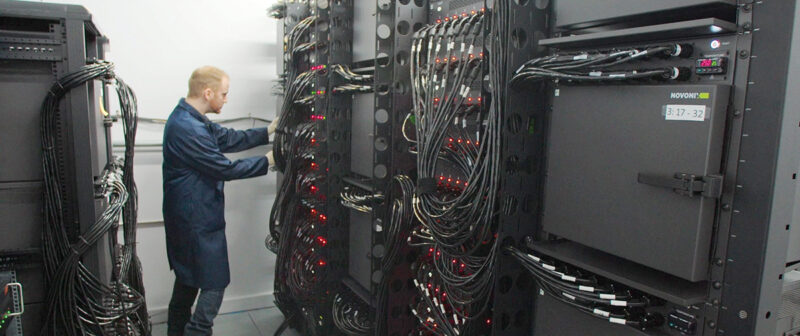
BTS performs the most advanced experimental work and scientific research using the Artificial Intelligence Data Solutions platform and quantum analysis to address some of the most challenging problems. It unveiled new products capable of machine learning algorithms and quantum simulations for battery development. Its instrument toolbox combines data processing/visualisation, analysis, and report automation.
While Tesla was among the first to use artificial intelligence for various purposes, including data collection, Novonix also uses it.
“Evaluation is done using an extensive range of advanced testing diagnostic tools and in-house electrochemical performance testing using UHPC or traditional cell cycling equipment either through contract services or the purchase of our UHPC equipment or high-performance technology, and subject matter expertise,” said Burns. “That will save you time in an industry experiencing hyper-growth in both demand and scientific advancement,” he added.
BTS uses the following three principal UHPC components for testing LIB cells:
- Channel modules – address a wide range of electric current measurements, providing reliable, high precision and rapid data analysis. These systems can measure CE with unparalleled accuracy.
- Thermal chambers – provide accurate and stable temperature control of cells, which is critical for reducing noise in measured data. Explicitly designed for UHPC, the thermal chambers can operate from -20°C to +60°C and accommodate various cell sizes, providing precise and stable interfaces with cycler systems. Novonix’s team of scientists and engineers is available for consulting at each research, testing and verification stage. The company can also build complete cell prototypes or components such as anodes, cathodes, additives, conductors and electrolyte formulations in various cell formats and sizes.
- Cell holders – configured for pouch cells, coin cells, cylindrical cells, and custom designs for high-precision testing.
The company has sold thousands of testing units to customers in 12 countries worldwide. Approximately half the company’s business is in North America, about 35% is in Asia, and the remaining 15% is in Europe.
Pilot LIB production facility
A pilot line for cell prototypes was established in 2018, in Nova Scotia, Canada. Burns said: “We can build pouch and cylindrical style cells. We can build 18650 and 2170 types of cell and stacked or wound pouch cells. Typically, we operate in the 5Ah size simply because most of our work is on new materials for cell designs and evaluation of their performance. It is a testing platform.
The ability to manufacture commercial lithium-ion cells on-site opens up a number of opportunities, from expanding our internal R&D to offering further services to customers. We are excited to continue to grow Novonix and support battery development activities here in Nova Scotia.”
Cathode materials division
Cathode material represents about 30% of the cost of a battery cell. Vantage Research forecasts the global cathode market size value to reach $69.9 billion by 2030.
Novonix’s all-dry cathode synthesis technology has great potential to reduce the cost of cathode material by minimising waste and the production’s environmental impact. The company is supported by Canadian government investments in its quest for more economical and cleaner production. The company began moving into a 35,000ft2 facility in March 2022, while maintaining BTS operations. With the addition of cathode materials, Novonix will produce two main components of LIBs.
“We do not fundamentally believe materials need to be better or have some step change to enable adoption in vehicles or energy storage. What we really need to focus on is better process technology,” said Burns. “How can we make the great materials we have today for LIBs cheaper or more sustainably with a lower environmental footprint? Especially with the technology and manufacturing growing up in China, with different standards. Synthetic graphite was an opportunity to improve the carbon footprint, and the same was true for the cathode.”
Burns said NMC synthesis is a very wasteful process, having significant wastewater streams that need to be treated and sodium sulphate by-products with no use. Unless you can repurpose these products, there is no good market for them, according to Burns. “With Prof. Obrovac, we worked on simplifying the process of making NMC and developed an all-dry synthesis process (ADSP),” he said.
“We can start,” he explained, “with metals, oxides, various forms of the material, not just the sulphates, and we do it in a zero water or liquid process. It is not a dry electrode because we do not use wet slurry to make it, but because we are making the cathode powders using a dry mixing and heating process instead of making it in continuous reactors with wet chemicals.” The following figures reinforce Burns’s words: the incumbent cathode material synthesis process produces 15,000 litres of wastewater and 1.6 tonnes of sodium sulphate per tonne of cathode powder.
Commercialising its ADSP
The company is commercialising its ADSP to improve high-nickel cathode material production. The pilot line will demonstrate large-scale production of up to 10 tpa of cathode material.
Testing of 1Ah pouch cells showed that Novonix’s NMC622 experimental material has morphology and electrochemical performance comparable to the commercial ones. Novonix engaged a Canadian engineering consulting company, Hatch. It has a world-class team of experts to help start-ups overcome challenges in commercialising their processes to provide a process comparison study between its ADSP and conventional cathode synthesis on cost and environmental impact.
According to Hatch’s study, Novonix reduced capital intensity by 30%, operational expenses by 50%, power consumption by 27%, CO2 intensity by 27% and water usage by 65%.
“Our 10 tpa pilot line is where we can demonstrate and start to provide samples of materials to potential commercialisation partners, either cathode producers or end users, such as the cell makers. And, of course, we have so many relationships from our work with our anode materials group in Tennessee,” Burns said.
Asked whether graphite anodes will stay with us for a long time – considering the impact of higher energy density technologies such as silicon and solid-state – Burns said: “I don’t think there’s any end to graphite anodes in the foreseeable future, meaning decades for LIBs. And I say that for two reasons. The first is the vehicle market, where we have the allure of silicon and solid-state batteries. But you must remember the problems with those chemistries and technologies we are trying to solve for all those companies. Or many of those companies that are now starting to build plants.
“They were founded in 2010, plus or minus a couple of years. And the problem with vehicles 10 to 15 years ago was that they did not drive far enough. The energy density of the batteries was not good enough, so the solution seemed to get rid of graphite and move to silicon or lithium metal.”
He said when Tesla built 400-mile vehicles to show they could, and the market is moving back to LFP for many vehicle batteries, it appears energy density is not a problem. Cost and durability are critical, and vehicle safety is the most important, which may be challenging for lithium metal and solid-state, he said. Safety, durability, and cost are crucial. This is why LFP has resurfaced as a dominant EV chemistry – an example is CATL, a leader in LFP.
“Another way to look at the vehicle market is the battery plants built today, as they cannot be simply converted to solid-state plants,” said Burns. “A good example is our investment earlier this year from LGES, where a joint development agreement intended to lead to an initial 10-year term supply agreement, which means they want to secure graphite well into the back half of the 2030s. Beyond vehicles though, you also have to think about the growth in the energy storage market. And even more importantly, energy density is not the solution for energy storage. Longevity is because you need the lowest dollars per kWh per cycle life.”
Burns looks at North America for LIBs and energy storage in general. “There is so much opportunity in front of us as a company. Of course, we have our primary focus, but we also plan for the future.”
Indeed, in every respect, Novonix is an awe-inspiring organisation with competent personnel, modern facilities in the US and Canada, extensive business affiliations and impressive IP.

